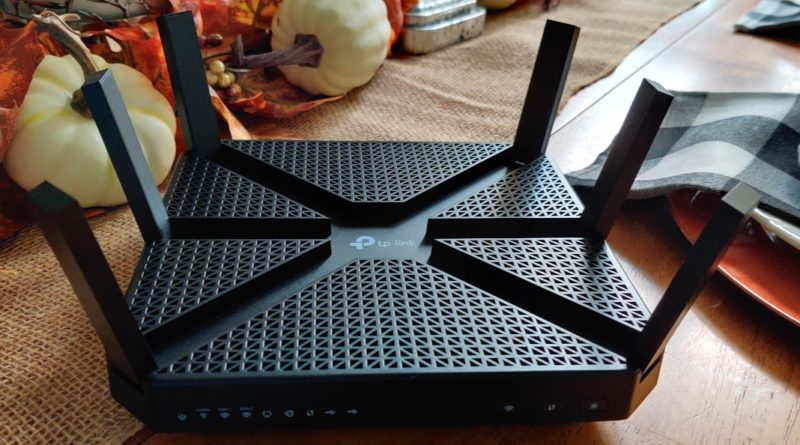TP-Link Archer A20 Wireless Router Review
As video, audio, and game streaming usage grows and the number of connected devices in our home skyrockets it is more important than ever to have a solid wireless router. Many folks make do with the router provided by their ISP but those are often underpowered and don’t make the best use of the bandwidth available to you. Enter companies like TP-Link and their $185 Archer A20 router. I’ve been using the Archer A20 for the last few weeks and I’ve been very impressed with the range of features and performance that it offers.
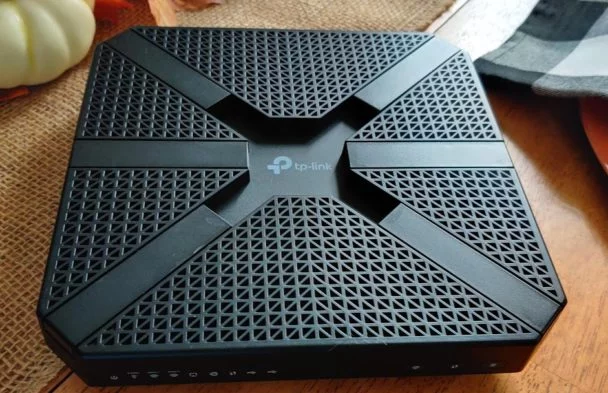
DESIGN
I’ll admit that looks shouldn’t really be a consideration when it comes to a router that just sits on a shelf. That said, the Archer A20 looks really cool. Cool in a DROID Does sort of way. It’s an all black box with six antennae that extend from every corner. There are blue status lights across the front of the unit (that can be turned off! Good on you, TP-Link). It’s about the perfect mix of unassuming and high-tech.
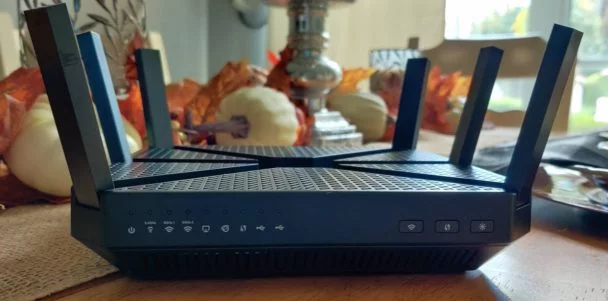
SOFTWARE AND CONFIG
The software load on the Archer A20 is pretty feature complete and I think will satisfy most users. It’s accessible via IP, web, and phone app with a TP-Link account.
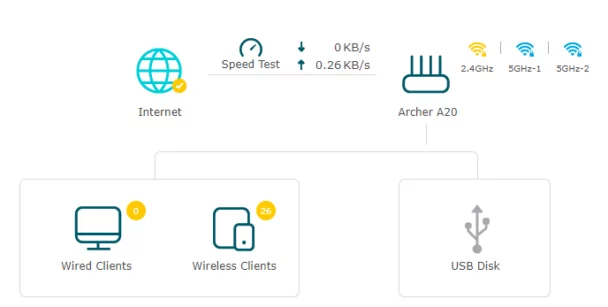
You can configure three wireless networks (1 2.4GHz and 2 5GHz) and three guest wireless networks ( 1 2.4GHz and 2 5GHz) for a total of six. That’s pretty impressive. I’ve setup the 2.4GHz network for my smart devices, a 5GHz network for normal users, and the second 5GHz network for my favorite devices. Plus I’ve added a guest network with no access to other resources on my internal network.
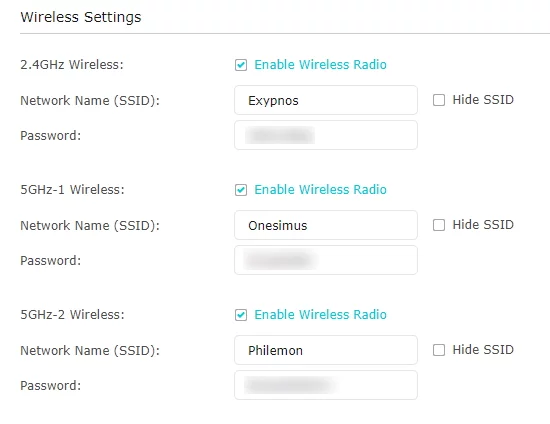
Some of the other included features are USB file sharing, parental control filtering by user/device, QOS, VPN (including support for OpenVPN), Alexa integrations (no Google Assistant, though), and IFTTT binding. I don’t have any Alexa devices but the IFTTT integration is interesting. You can do things like receive notifications when new devices connect to your network, trigger events when a specific device connects (like turn on the lights when my cell phone connects), and more.
HARDWARE AND SPECS
The A20 supports 802.11a/b/g/n/ac wireless protocols. That’s pretty standard fare but it’s missing the newer, less prevalent 802.11ax, also known as WiFi 6. I don’t have any WiFi 6 devices so it isn’t a great loss for me at present. That could change as WiFi 6 becomes more widespread in the future.
The Archer A20 has four wired ports for LAN, 1 USB 2.0 port, 1 USB 3.0 port, and a WPS connect button. There are LEDs across the front of the device to provide instant status information on connectivity. Thoughtfully, TP-Link allows you to disable these lights. I have mine set to turn off automatically each night.
Archer A20 Specs
| CPU | Unknown Quad-Core 1.8 GHz CPU |
| RAM | 512 MB |
| WAN Port | 1 x Gigabit Ethernet |
| LAN Port | 4 x Gigabit Ethernet |
| USB | 1 x USB 2.0 1 x USB 3.0 |
| Dimensions | 7.9 x 7.9 x 1.5 inches 1.79 pounds |
| Wireless Signal | 1 x 2.4GHz, 750Mbps 2 x 5GHz, 1625Mbps |
| Antenna | 6 external |
| TP-Link WiFi Features | MU-MIMO Beamforming Airtime Fairness RangeBoost NitroQAM |
PERFORMANCE
Bells and whistles and features are great but the main thing I’m concerned about is wireless performance. And the Archer A20 delivers. My internet circuit is Frontier fiber rated at asymmetric 500Mbps (though I never get close to that up). The Archer A20 pulls the full bandwidth off my Frontier router, which is easily told thank to the inbuilt speed test.
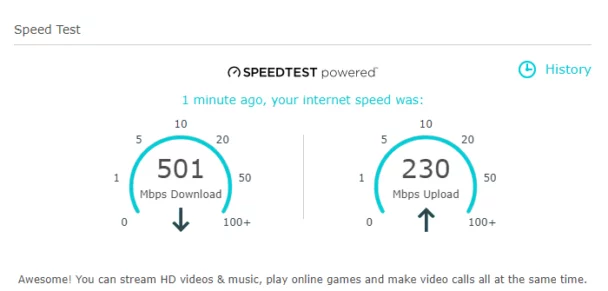
So how does it perform at the device level? Pretty darn well. All of the speed tests were run using Ookla’s Speedtest app on a OnePlus 7 Pro connected to a 5GHz AC network. At 10 ft distance, on my living room couch in my case, I’m pulling about 80% total bandwidth. Going to 30 ft distance, in another room with closed doors and steel studded walls, I still see 65%+ speeds. And at 50 ft, which is outside the house, I pull over 50% of available bandwidth. And this is with 26 devices connected to the router wirelessly.

Speeds at 10 ft 
Speeds at 30 ft 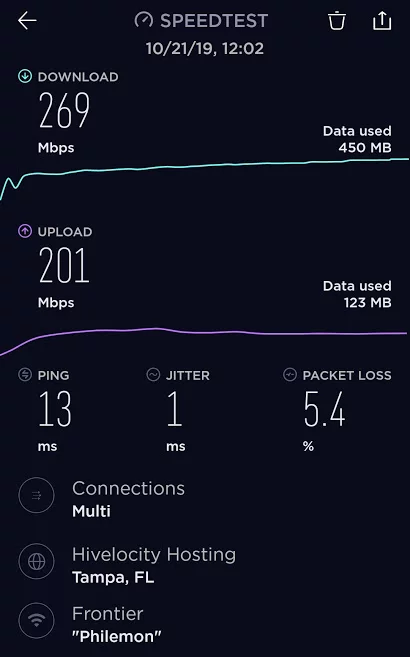
Speeds at 50 ft
FINAL THOUGHTS
I’ve found the TP-Link Archer A20 to be a fantastic upgrade over the router provided by my ISP. The range of configuration options are matched only by router’s wireless range. With excellent speeds and a wide range of features it is easy for me to recommend the Archer A20. It’s not a trivial amount, $185, but it might dramatically improve the wireless performance in your home.

